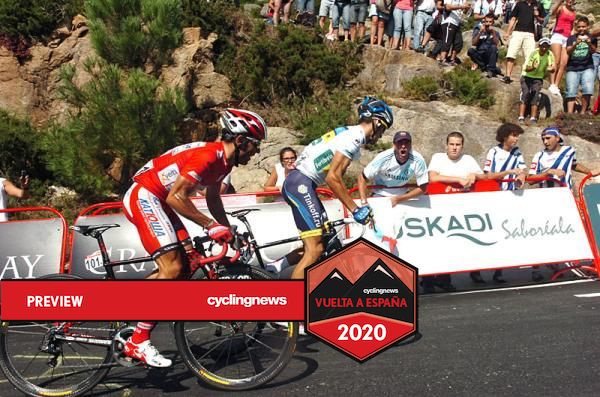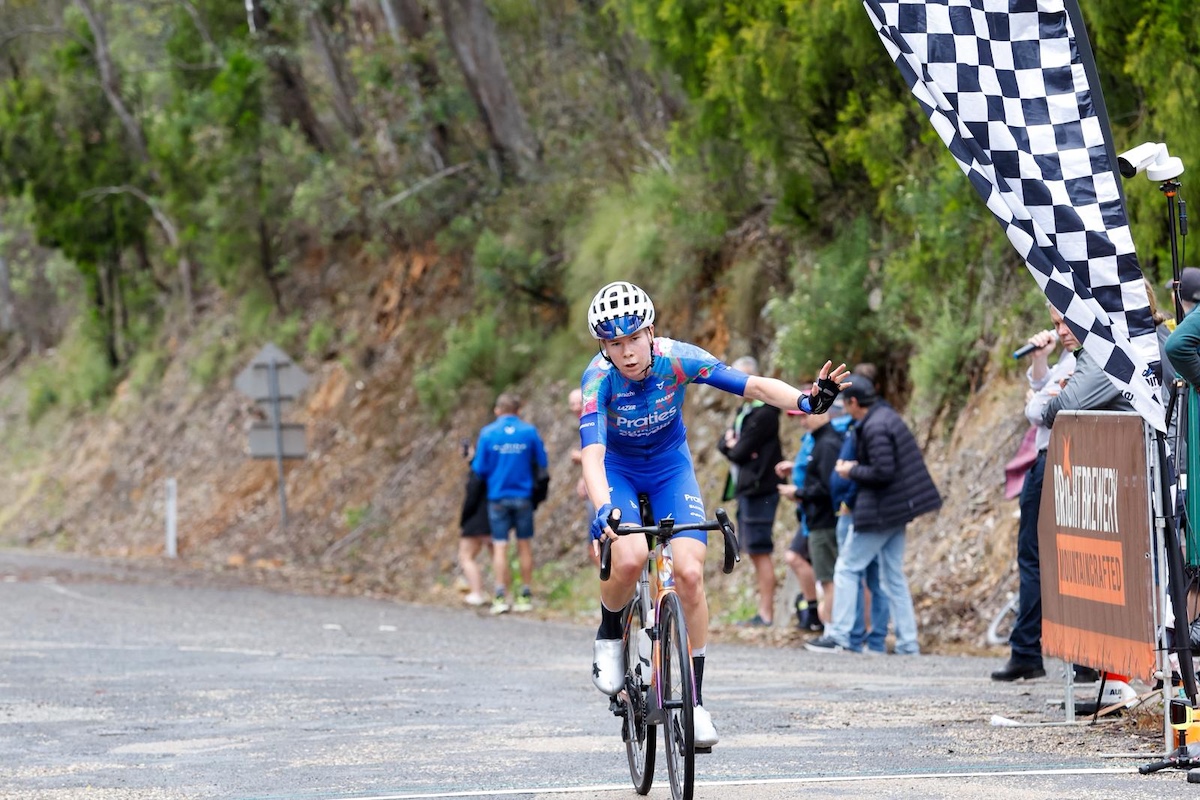Roglic the reference point in Vuelta a España’s third week
Tuesday’s time trial and Saturday’s ascent of Covatilla most likely flashpoints

The Vuelta a España heads into its third week with five riders still in the main GC battle, but Primož Roglič (Jumbo-Visma), despite suffering on the Angliru and losing the lead, remains the outstanding favourite.
All roads to a hypothetical victory in Madrid first lead through Tuesday’s unusual, and crucial, medium-length time trial in northwest Galicia, however, consisting of 32 kilometres of rolling road and then an almost unbearably steep two-kilometre ascent to the Ézaro dam.
On paper, Roglič, as a consummate time triallist and 10 seconds off the race lead, is the out-and-out favourite both to regain la roja and take the stage win.
The key question is whether the Roglič that rolls down the start ramp in Muros on Tuesday afternoon is the racer that cracked so disastrously on the Planche des Belle Filles time trial of the Tour de France this September or the Roglič of the Pau TT in last year’s Vuelta, who crushed the opposition to the point where the race was all over bar the shouting with nearly two weeks to go.
Asked after the Angliru if Tuesday suited Roglič’s TT capabilities, Jumbo-Visma’s Sports Director Grischa Niermann answered, “yes, I think so. It’s more than 30km, a real time trial and there’s a bit of a headwind. The climb is 1.5 kilometres long, but it has similarities to the Angliru’s steepness, so it’s going to be interesting.”
Preceded by exposed roads along the Atlantic coastline - should it be windy, it could be a huge factor here - former Ézaro winner Joaquim Rodriguez is convinced that the final ascent is so tough that nobody will even attempt to risk riding their time trial bike up it. Cue, therefore, possible drama if somebody fumbles the obligatory bike change at the foot of the ascent.
Then it’s onto the climb, and in fact, parts of the Ézaro ascent are steeper than the Angliru, as Cyclingnews can testify from a recon of the climb back in 2016. It officially averages 13.5 per cent, but from the way it zigzags upwards, it’s like some crafty local town hall official designed the road to take traffic as quickly as possible up the front wall of the Ézaro dam without the expense of having to install a lift.
The latest race content, interviews, features, reviews and expert buying guides, direct to your inbox!
The proof of that cunning plan is, whereas the Angliru ‘only’ reaches 26 per cent, roadsigns at the foot and the summit of the Ézaro read a mind-blowing 30 per cent, meaning that heavy traffic is formally banned from going up (or down) it. Furthermore, unless the road surface has changed recently, various of the toughest segments are cement, not tarmac. If it rains, as is forecast in the area for early on Tuesday, and the surface is damp, getting up that sort of steep road could be very difficult indeed.
Back in 2016 Cyclingnews reported - under the headline “Is this the Vuelta’s steepest ever climb?” - that Ézaro normally took between seven and eight minutes to tackle, although coming at the end of a 30km TT that could be a different story. Delving into local newspaper archives, Cyclingnews also discovered that in 2012 Galician former pro Ezequiel Mosquera had recounted to the Faro de Vigo newspaper that, “this climb has a segment of 300 metres which is more than tough, it’s impossible.”
Mosquera also recounted that the first riders to tackle the climb were on a local club, the CC Noia in the early 90s, using a 39x23 gear. However “most of them went up on foot - on foot and backwards, because it was impossible to go up walking forwards!”
Sternly warned by our hotel owner that “if you drive up it, stay in first gear all the way” from the moment the route swings left onto the climb proper near a massive dam and power station, the gradient instantly stiffens to around 15 per cent.
The road surface, barring the hardest mid-way segment, which is a kind of rough, dusty cement, is good, the road width roughly a vehicle-and-a-half distance. Although there are no houses to block any wind - the village of Ézaro lies at the foot of the climb - the gradient is so steep that it is almost irrelevant.
The worst segment of all comes on a kind of gentle, mid-climb - a chicane with one sharper bend, just when the road helpfully switches to a cement section. As Cyclingnews wrote in 2016, “this is the equivalent of the crucial ’S’ bend on the Mur de Huy ascent in the Fleche Wallonne - but probably harder.”
The contenders
On such a challenging course, the question of whether Roglič is closer to his Pau 2020 or the Planche 2019 level of time trialling will be critical. Those who feel things might not go the Slovenian’s way point to his track record of facing the third week of Grand Tours, and his inability to follow the other favourites on the steepest segments of the Angliru. Those who do, just point to his general TT record over the last four years, which includes time trial wins in the Giro as well as the Vuelta.
That said, it has to be added that none of the four riders also with a shout of either remaining in red or taking it in the week - Carapaz at 10 seconds ahead, Hugh Carthy (EF Pro Cycling) at 22 seconds behind, Dan Martin (Israel Start-Up Nation) at 25 seconds, and Enric Mas (Movistar) at 1:40 back - are atrocious time triallists by any means.
Carapaz, who has the added motivation of defending the leader’s jersey, will benefit from time references and says he has been working hard on his time trialling.
As for Carthy, he has always been a solid time trialler - witness his eighth place in the San Marino TT of the Giro last year. As his first pro team directeur, John Herety of the late, lamented Continental Rapha-Condor JLT squad, tells Cyclingnews, “we signed him because he was a climber who could time trial well. Even back in the day he was doing 19 minutes for 10-mile TTs.”
Final mountain stages
Nor does the race end on Tuesday evening. The time trial is followed by two very lumpy stages through the north-westerly region of Galicia. Quite apart from the weather potentially being a factor - while temperatures are usually pretty mild, the area is notoriously windy and rainy in late autumn - both stages have a hefty amount of vertical climbing.
Both stages are over 200 kilometres long, stage 14 from Lugo to Ourense has 2,850 metres of climbing, while Mos to Sanabria has just over 4,000 metres. Both have uphill finishes - Ourense’s after a lengthy, two kilometre, grind up through the city, while Sanabria’s a much shorter ramp but with a nasty corner 300 metres to go, where Alberto Contador memorably came a cropper in 2016.
Stage 16 visits the little-known mountains of the Sierra de Francia, and even if the last classified challenge, the first category Robledo, is a good 31 kilometres from the finish, the rugged terrain of the second half of the stage could see some movement on the GC front.
Then, as for the Covatilla, the last of the 2020 Vuelta’s seven summit finishes, while nowhere near as hard as the Angliru, it is at the end of a third week and intense season where most GC racers will concentrate on defending the positions they already hold rather than take excessive risks. But should whoever is leading the Vuelta show any kind of weakness, this will be the last chance for the rivals to make an impact.
First though, comes Tuesday, and as Miguel Indurain said last week, “that’s when the cards will all be on the table. After the time trial, it’s a different kind of Vuelta altogether."
Alasdair Fotheringham has been reporting on cycling since 1991. He has covered every Tour de France since 1992 bar one, as well as numerous other bike races of all shapes and sizes, ranging from the Olympic Games in 2008 to the now sadly defunct Subida a Urkiola hill climb in Spain. As well as working for Cyclingnews, he has also written for The Independent, The Guardian, ProCycling, The Express and Reuters.

